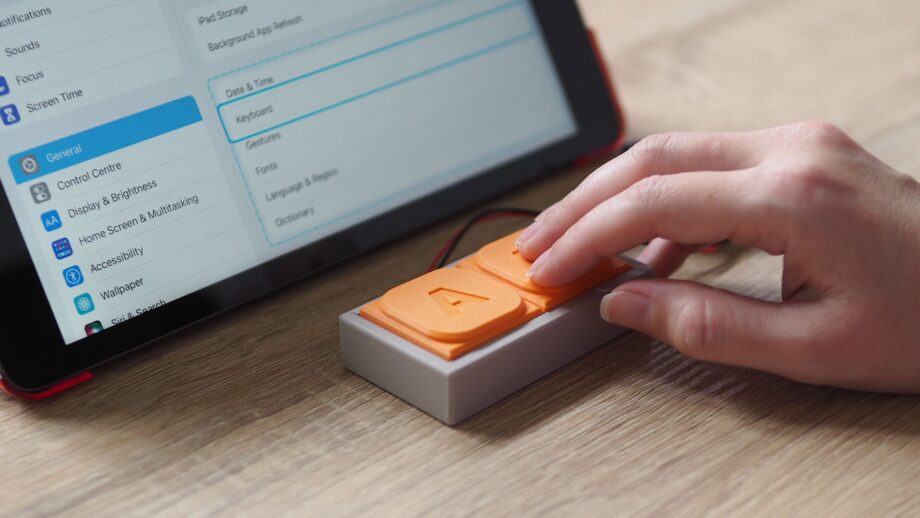Computer devices and systems are vital for communication, education, employment, social interaction, and more. But more often than not, they can be inaccessible for people with disabilities. In this project, you will be designing a Bluetooth dual switch access device that enables people with disabilities to control mobile phones, tablets and computers – empowering individuals with physical and cognitive impairments to interact with technology, engage with their surroundings, and enhance their independence.
The process begins by building and learning about an example device called Tap, made up of a micro:bit microcontroller and a series of 3D printed components. Using your newly gained skills, you’ll move on to identify a real or hypothetical end user, and go through a creative journey to customise a dual switch specifically for their needs. Learn more about Tap in the video below and browse through the project sections to learn more about the journey.
*Special thanks to Loreto Dumitrescu for the project inspiration, Bill Siever for developing the BLE HID plugin for MakeCode, and DrakerDG for the micro:bit 3D model used throughout the project.
















